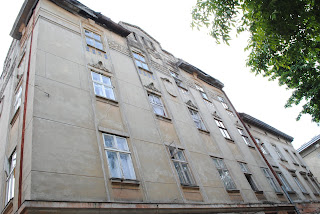

After the Astro-Hungary revolution (1848) the Head Rus Rada (the first Ukrainian political organization) proclaimed the unification of all Ukrainians into one nation. They demanded that the Austrian government divided Halychuna into two seperate territories (East- Ukrainian Region and West- Polish Region). They insisted on introducing the Ukrainian language as the language of instruction in all schools. The Rada only opporated until 1851 but they managed to establish a cultural and educational organization, The People's House in Lviv and publish the first Ukrainian newspaper.
World War I turned Lviv into a battlefield between the Austria-Hungarians and the Russians.
In September of 1914 the Russian army occupied Lviv. Troops stayed in Lviv for 9 months and the city was visited by Russian Emperor, Nikolay II. Metropolitan Andrey Sheptysky was exiled to Russia. During their retreat the Russian army confiscated a large amount of cultural and material valuables. The country was restored to the Austrians. Taking advantage of the situation a group of Austrian officers of Ukrainian decent took the city under their control on November 1, 1918. The whole city broke out into street wars between the Ukrainians and the Poles. The Ukrainian troops surrendered on November 21, 1918.
In 1920 the Bolshevik calvary attempted to break Lviv's defense. Starvation, epidemic diseases, social conflicts, and other hardships badly hit the population. Under the Riga peace agreement, Lviv became a part of the second Polish Republic.
At the beginning of the second World War Lviv was caught between the German troops pressing on the western boarder and the Soviet troops crossed the eastern boarder at the Zbrootch River. Lviv's fate was decided in 1939 when the two signed a secret protocol of Molotov-Ribbentrop. Lviv was given to the Bolsheviks who persecuted and repressed the people. The people of Lviv greeted the first German squadron with flowers when the arrived. At the onset of their invasion the Nazis blew up all the synagogues and decimated some of the Europe's oldest Jewish cemeteries. They set up a ghetto and embarked on a systematic entermination of Jews. 1944 the Soviets restored power but no one greeted them with flowers and ruled until the 1990s.




















































